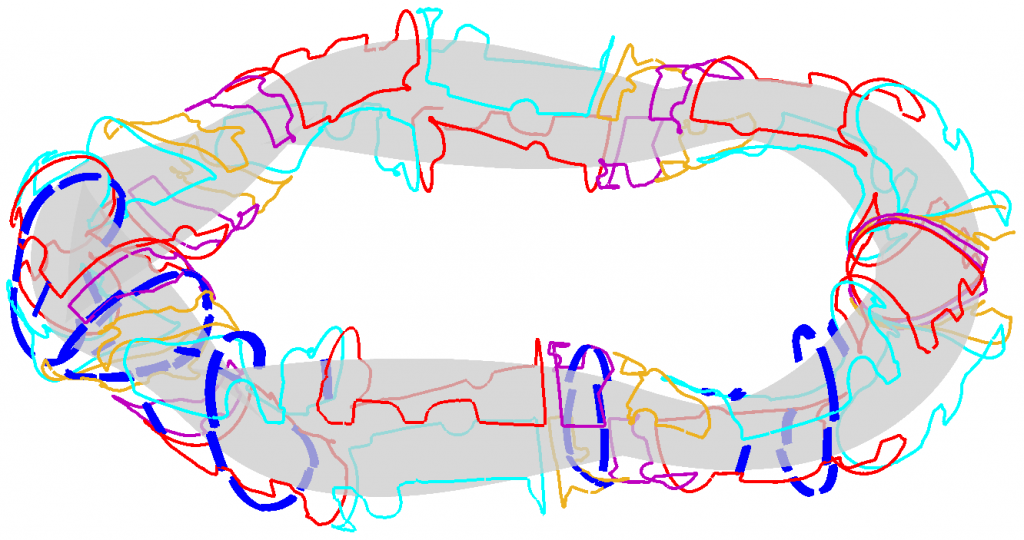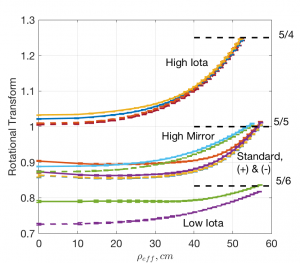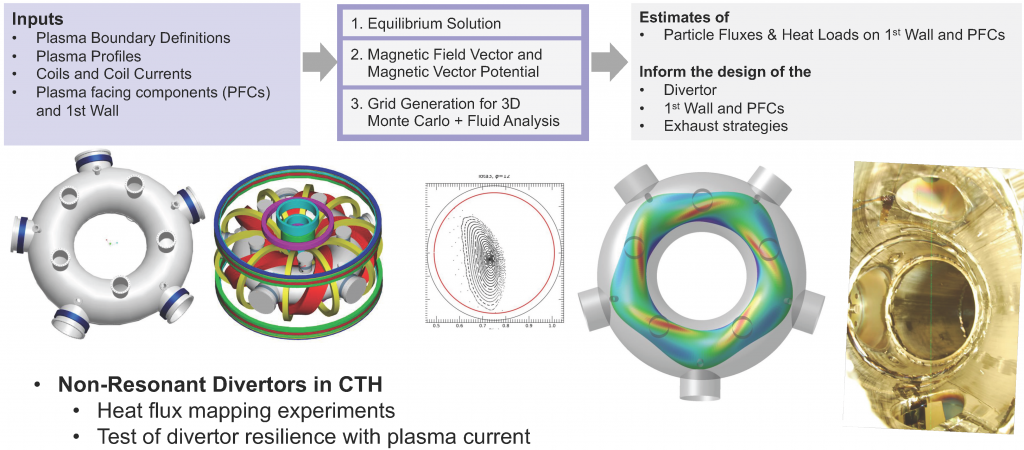Equilibrium reconstruction
Reconstruction of the plasma equilibrium is a vital tool for toroidal fusion experiments which plays an important role in interpreting diagnostic signals and understanding plasma phenomena. Reconstructions are iterative in nature, involving repeated calculations of the MHD equilibrium and synthetic diagnostic signals with comparisons to measurements. The parameters that describe the equilibrium (shape and location of the plasma boundary and profile information) are adjusted between iterations to determine the best-fit of the synthetic signals to measurements. These profiles are used to interpret diagnostic information and further physics analysis.

Reconstructions utilizing V3FIT can be constrained by various magnetic diagnostics (see figure above), Thomson Scattering, microwave interferometry, X-ray imaging crystal spectroscopy, soft X-ray diagnostics and a variety of boundary conditions, including probe measurements. Finite-beta equilibrium reconstructions of the rotational transform (the ‘pitch’ of the magnetic field lines) are plotted below for the ‘Standard’, ‘High-Iota’, ‘Low-Iota’ and ‘High-Mirror’ magnetic configurations explored during the recent W7-X campaign.

Edge modeling
The toolsets for 3-D finite beta, free-boundary MHD equilibrium reconstructions and edge analysis includes several specialized software suites and interfaces for a streamlined workflow (outlined below).
The definitions of the plasma (magnetic configuration and profiles) and plasma-facing components are utilized by subsequent analysis and visualization codes. The output metrics including particle fluxes, heat loads, etc. can be optimized through careful adjustment of coil currents and plasma impurity profiles. Edge modeling is a growing part of the research thrusts of both W7-X and the Compact Toroidal Hybrid experiment at Auburn University and is an essential aspect of the design of “next step” stellarator experiments.

Primary Auburn personnel: John Schmitt, Greg Hartwell
IPP collaborators: T. Andreeva, J. Geiger, U. Neuner, K. Rahbarnia, J. Schilling
